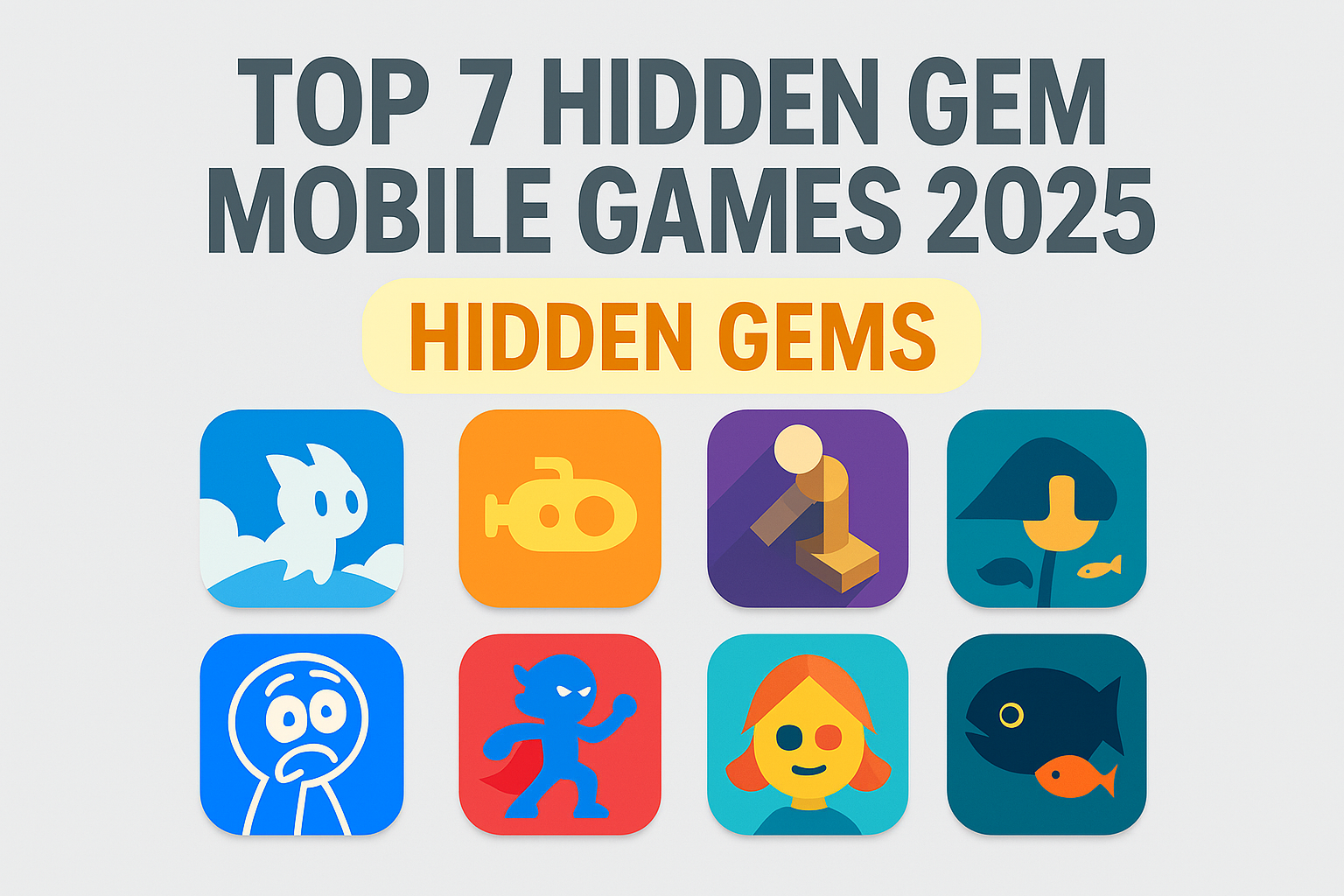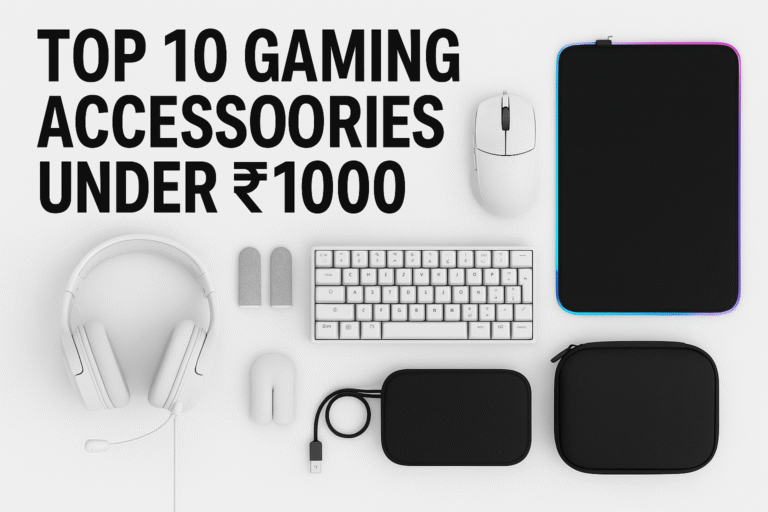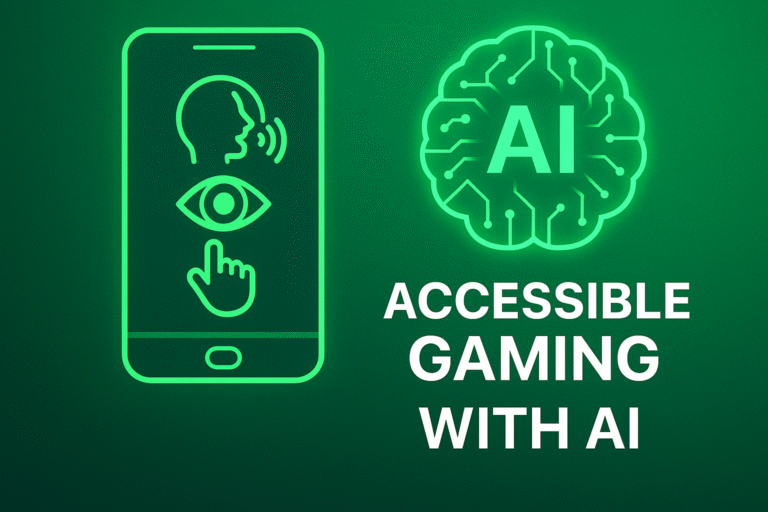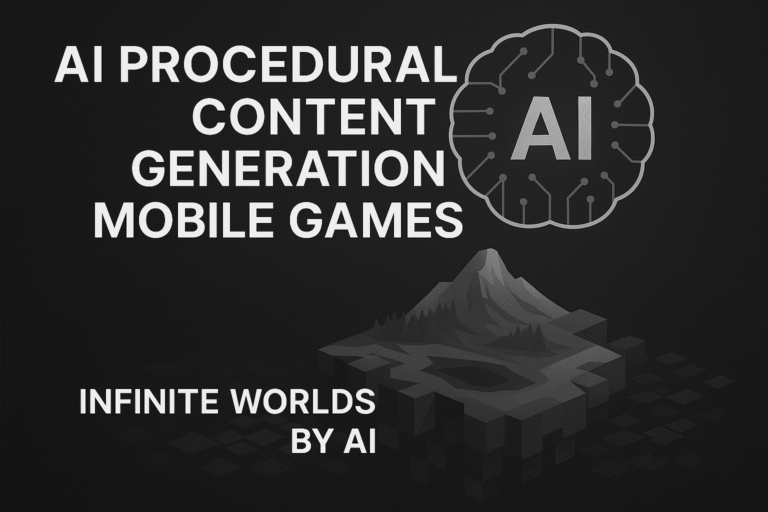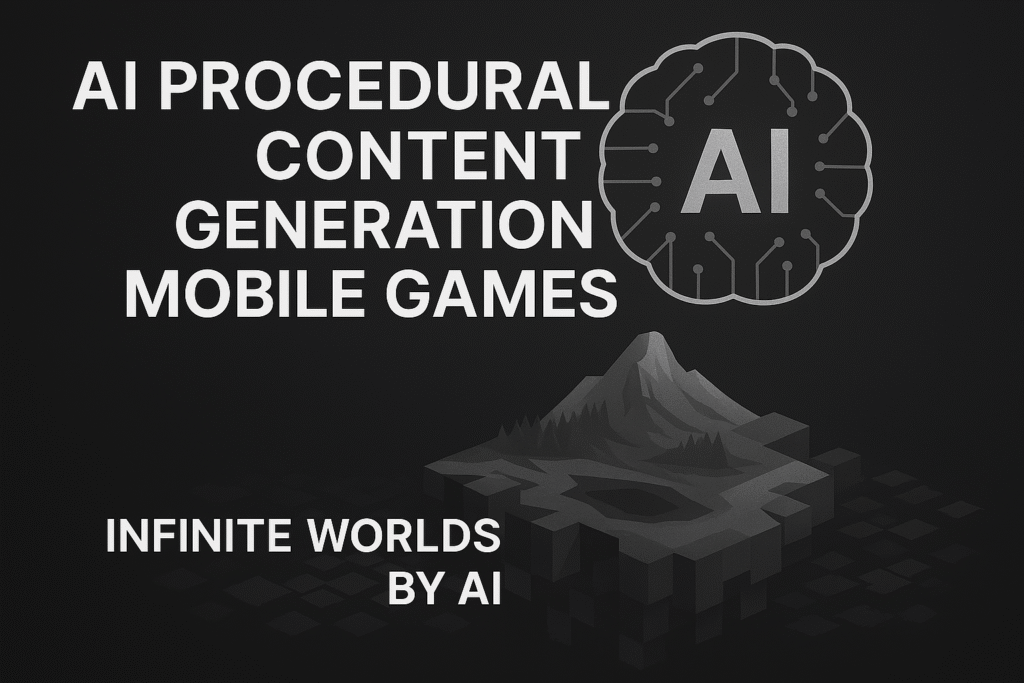
Explore how AI procedural content generation transforms mobile games—this sleek black-grey thumbnail features bold text alignment, a glowing AI brain icon, and endless terrain blocks fading into futuristic depth.
AI procedural content generation mobile games is reshaping how developers create immersive experiences—automating levels, assets, and narratives with machine-learning models that learn from existing designs and player behavior. By blending procedural generation with AI, studios can craft infinite worlds without proportional increases in art budgets or development time.
What Is AI Procedural Content Generation Mobile Games?
AI procedural content generation mobile games fuses traditional PCG algorithms with deep learning, neural networks, and reinforcement learning. Unlike purely random systems, AI-driven PCG analyzes patterns in hand-crafted levels or player telemetry to generate coherent, engaging content that adapts to player skill and style.
Why Machine Learning Elevates PCG
Machine learning models—such as LSTMs, GANs, and autoencoders—learn level-design principles from data sets of existing maps, terrain meshes, and asset libraries. This approach enables:
• Context-aware asset placement that respects game lore
• Style-transfer to match art direction automatically
• Co-creative workflows where AI suggests dozens of variations in seconds
7 Revolutionary Techniques in AI Procedural Content Generation Mobile Games
1. Neural Network–Driven Tilemap Synthesis
Using convolutional neural networks trained on thousands of platformer maps, AI can synthesize new level layouts that balance challenge and exploration. Developers at indie studios link these models directly into Unity’s Procedural Toolkit to generate varied maps each playthrough.
2. GAN-Based Texture & Asset Creation
Generative adversarial networks (GANs) produce high-fidelity textures and environment props by learning from concept art. Mobile developers integrate GAN pipelines into Unreal Engine via custom plugins, ensuring on-device asset streaming with real-time style consistency.
3. Reinforcement Learning for Dynamic World-Building
Reinforcement agents explore prototype maps and learn placement strategies—rewarding layouts that maximize player engagement metrics. This dynamic PCG lets worlds evolve during live service updates, keeping content fresh without manual level design.
4. Autoencoder-Powered Loot & Reward Distribution
Variational autoencoders analyze player progression data to optimize loot drops, crafting recipes, and enemy placement. By predicting player needs, AI procedural content generation mobile games delivers balanced rewards that feel handcrafted yet infinitely variable.
5. Grammar & Markov Chain Hybrid Generators
By blending rule-based grammar systems with Markov chains, AI can create quest narratives and dialogue trees that stay logically consistent and immersive. Mobile RPGs harness this hybrid PCG to spawn side-missions on the fly, reacting to in-game events and player choices.
6. Player-Adapted Level Scaling
AI procedural content generation mobile games models individual player skill curves to adjust level complexity in real time. If a user breezes through a stage, the system introduces branching paths or optional challenges—ensuring every run feels tailored.
7. Mixed-Initiative Design Tools
Artists and designers collaborate with AI using mixed-initiative editors, where both human creativity and machine assistance shape the final outcome. By sketching rough layouts, creators trigger AI to fill gaps—automatically detailing terrain, foliage, and interactive elements. This collaborative PCG slashes prototype time by up to 80%.
Integrating AI PCG into Your Workflow
- Choose a framework: Unity ML-Agents or Unreal’s PCG plugins.
- Curate training data: Supply high-quality level designs and asset sets.
- Train models offline; validate generation quality via playtests.
- Integrate AI components directly into the CI/CD pipeline to enable seamless and continuous updates.
- Monitor metrics—engagement, completion rates—and retrain to refine content.
Benefits of AI Procedural Content Generation Mobile Games
- 🚀 Infinite Replayability: Every session unveils unique challenges.
- 💡 Design Efficiency: Small teams achieve AAA-quality worlds.
- 🔄 Dynamic Updates: Live service titles stay fresh without new art.
- 🎨 Creative Freedom: Designers focus on vision; AI handles repetition.
- 📈 Player Engagement: Personalized content drives retention and monetization.
Real-World Case Studies
• No Man’s Sky employs neural procedural generation to create more than 18 quintillion planets, each featuring distinct ecosystems and wildlife.
• Minecraft’s modding community leverages PCG tools like WorldPainter HPC to craft vast, player-driven landscapes.
• Rogue Legacy 2 uses a combination of grammar-based systems and GAN models to generate infinite castle designs, blending handcrafted rooms with AI-created layouts.
Internal Backlinks
- Deep dive into automated testing with AI-Powered Game Testing
- Explore adaptive difficulty via AI Difficulty Scaling in Mobile Games
- Champion accessibility in How AI Is Making Mobile Games More Accessible
- Secure communities with AI Voice Chat Moderation Gaming
External DoFollow Links
- Procedural Content Generation using Machine Learning (PCGML) – arXiv
- Mastering AI-Powered Procedural Content Generation – Whimsy Games
- Unity Procedural Toolkit – https://assetstore.unity.com/packages/tools/terrain/procedural-toolkit-12345
- Unreal Engine Procedural Content Overview – https://docs.unrealengine.com/en-US/Engine/ProceduralContent/Overview
- GitHub – SebLague’s Procedural Generation Samples – https://github.com/SebLague/Procedural-Generation
